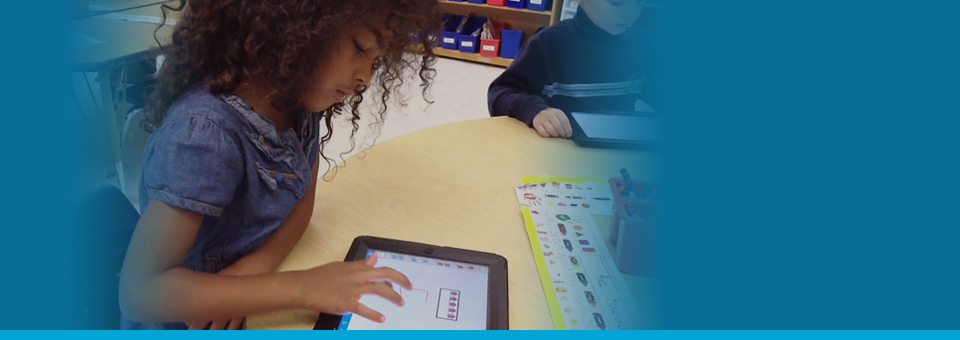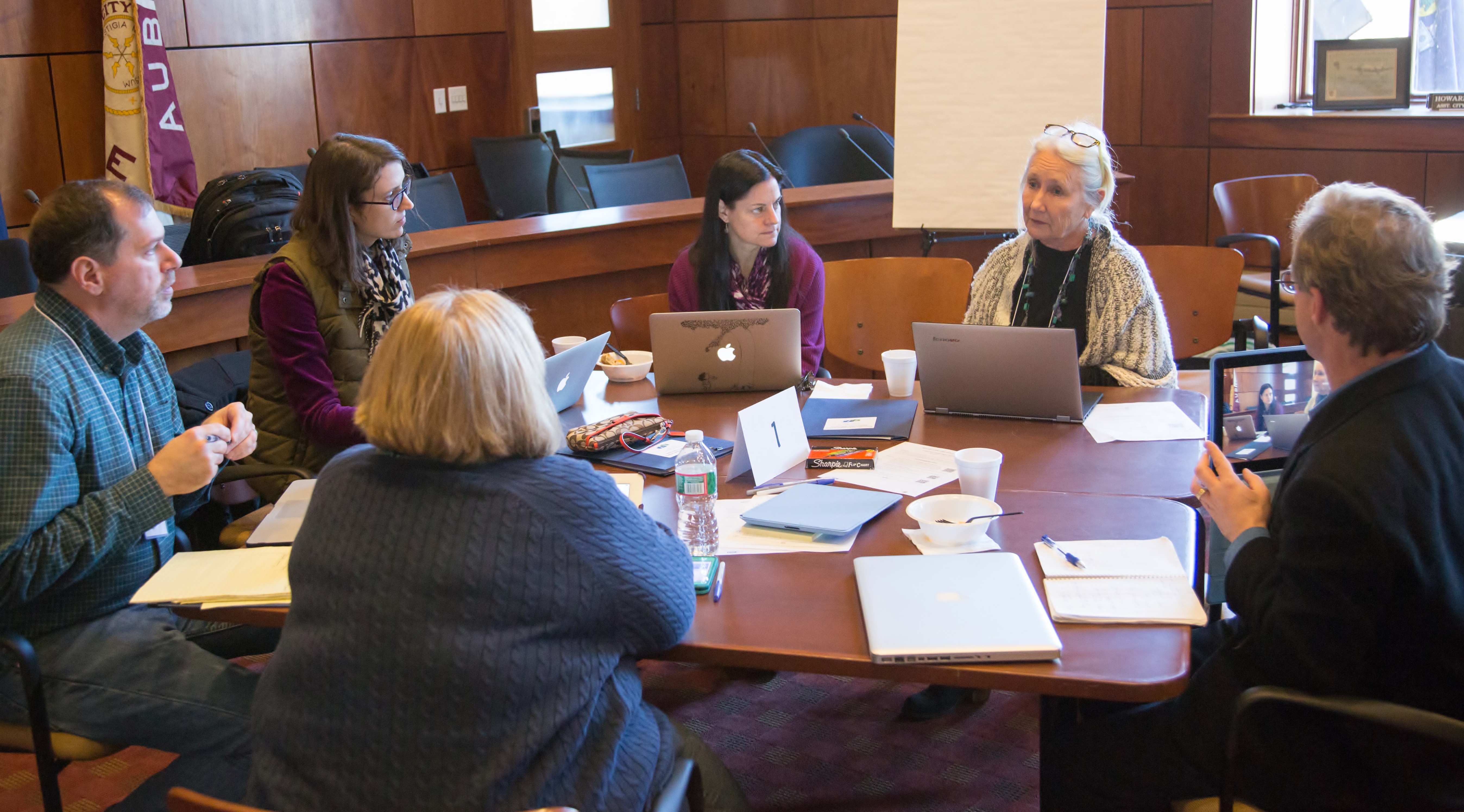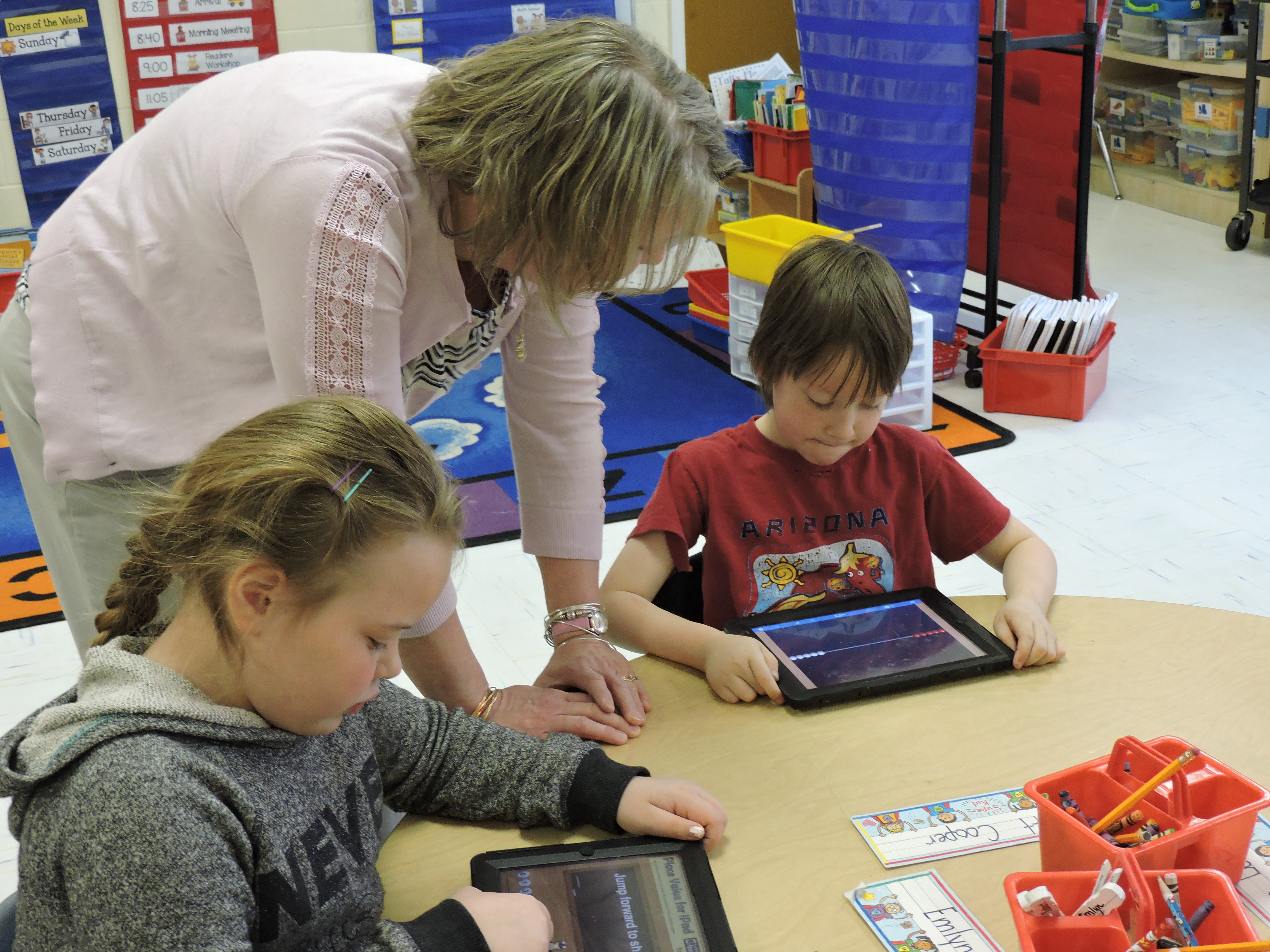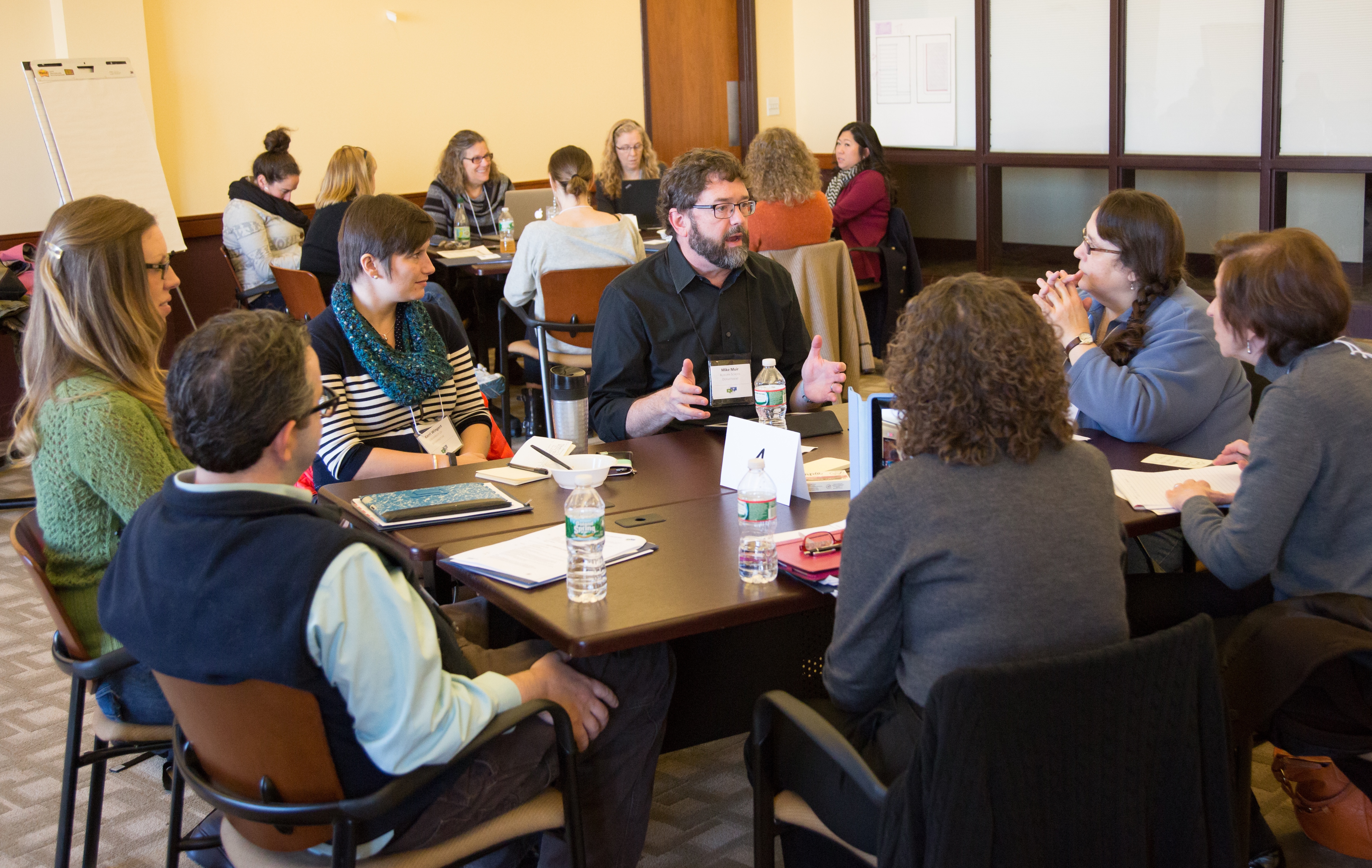Interactive STEM, Auburn, Maine, Team Discuss Research-Practice Lessons at REL Boston Meeting
Left to right: EDC’s Pam Buffington, R+P Collaboratory Co–Principal Investigator, and Laura Shaw and Lisa Coburn, Washburn Elementary School, Auburn, Maine, are joined by PEER Director Michael Strambler, Yale School of Medicine; PEER Co-Director Clare Irwin, EDC; George Coleman, former Connecticut Commissioner of Education; PERC P.I. Julie Riordan, REL Northeast & Islands at EDC; and PERC co–P.I. Marco Andrade, Providence Public Schools at a researcher-practitioner partnerships forum, REL Northeast & Islands Governing Board meeting, October 28, 2015.
When they meet twice each year, the 27 members of the Regional Educational Laboratory Northeast and Islands Governing Board hear firsthand from the eight research alliances that are supported by REL researchers across the Northeast. Alliance members and researchers reflect openly with the board about the ways they are collaborating to advance their five-year research agendas.
At their October 28–29, 2015 meeting in Boston, the board was treated to a surprise: A principal and teacher from Interactive STEM’s Research + Practice Collaboratory site in Auburn, Maine—alongside EDC researchers and leaders of new researcher-practitioner partnerships in Connecticut and Rhode Island—shared goals and early lessons from their initiatives. While the R+P Collaboratory partnership in Auburn is situated at the school level, the Providence Education Research Consortium (PERC) is focused on Rhode Island’s largest district, and the Partnership for Early Education Research (PEER) in Connecticut is regional.[1]
Lessons learned by EDC researchers during the formation, in 2012, of the eight research alliances at REL Northeast & Islands have contributed to the successful launch and sustainability of these new partnerships—around ways of meeting and setting research agendas as well as creating an authentic give-and-take between researchers and educators. Panelists commented on the importance of:
- mutualism between researchers and practitioners, or equal sharing in the benefits of the partnership;
- co-developing research questions to be sure they are well defined and researchable (a concern for researchers) and rooted in real problems (a concern for policymakers and practitioners);
- research agenda-setting as capacity building, drawing different levels of district administration and local community agencies and higher ed into the conversation;
- sharing the collaborative research model and processes with others, including with the state and other districts, potentially through a website and electronic newsletter; and
- managing the tension between longer-term research cycles and more immediate demands placed on districts.
Mutualism a Key Ingredient in Maine
Washburn Elementary School Principal Laura Shaw brought home to the Governing Board the importance of equal sharing in a partnership. She said that her initial assumptions have changed since EDC’s Interactive STEM team and Maine university researchers first visited Auburn two years ago. “My initial thoughts were, ‘This is wonderful. We have a district that has declining math scores, and we have somebody who can fix it,’” Shaw said.
But as the collaboration kicked off, Shaw, teachers, other administrators, and the researchers began investigating the district’s challenges together, exploring potential solutions and trying out new approaches. “We learned that we have as much to offer and bring to the table with the knowledge that we have in context in our schools and about our kids as much as they have to offer us with access to current research and ideas for strategies,” she said.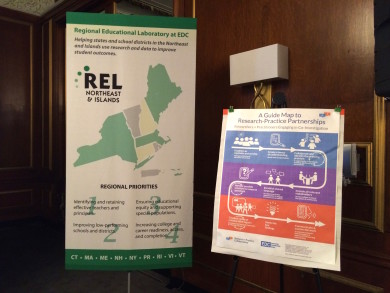
“They didn’t just come in one time and say, ‘Here are some best practices. Go to it,’” said Lisa Coburn, Grade 1 teacher and pre-K–2 team leader at Washburn Elementary. “It was, ‘Okay, this is your need. Let us do the research. We’re going to find out what those best practices are and then come back and then work together.
“I think for me as a teacher, having that professional development [e.g., with research briefs] was a huge success, and then, as a result, my classroom instruction was so much better, as has been the success of the students…. More importantly, kids see themselves as mathematicians, and that was our goal. They have ownership in their own growth.”
Marco Andrade, Director of the Office of Research, Planning, and Accountability at Providence Public Schools, and co–principal investigator of PERC, described the back-and-forth as a symbiotic relationship. “We can offer context for certain things, we have a certain perspective, and then our partners at EDC have some of that capacity around the research,” he said. “We join forces and are able to bring things together and generate some knowledge that can be of use to us.”
Collaborators Are More Likely to Be Flexible
Confronting problems of practice as a team of educators and researchers has made it easier to adjust collaborations as they progress. In Auburn’s first year, for example, monthly meetings with teachers at three high-needs schools allowed for constant refinement using the design-based implementation research (DBIR) approach. In the second year, however, with the addition of three new schools, including one with a high percentage of English learner students, the same schedule no longer worked. The design team decided that early-release days would better allow teachers to better engage with problems and refine solutions.
“What could we do differently that really keeps the same research questions and the same priorities?” asked Pam Buffington, R+P Collaboratory co–principal investigator and EDC’s Interactive STEM team leader. “We worked it out together. We have to be flexible enough and also own the problem as a team, and that really has made a big difference.”
“This point of adjustment is really important,” said PEER Director Michael Strambler, Assistant Professor of Psychiatry at the Yale School of Medicine. He noted that his team started out with hour-long meetings that always ran long. But the 90-minute format runs long, too.
“I think in this work, one has to be flexible,” he said. “You can’t go into this with a rigid idea about how it’s going to go, whether that has to do with meeting times and meeting agendas or your research questions.”
[1] PEER and PERC are funded by grants from the Institute of Education Sciences at the U.S. Department of Education.

